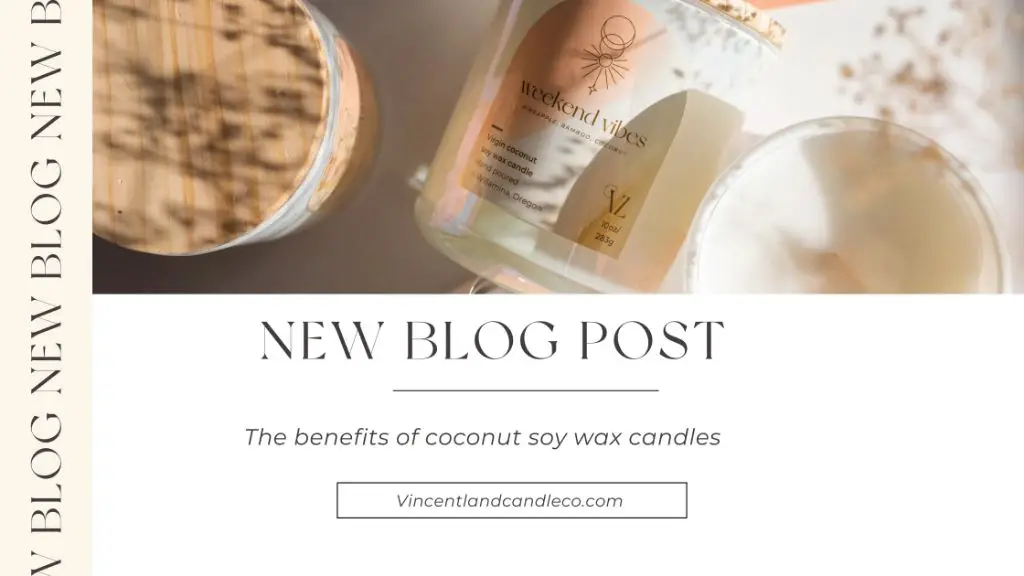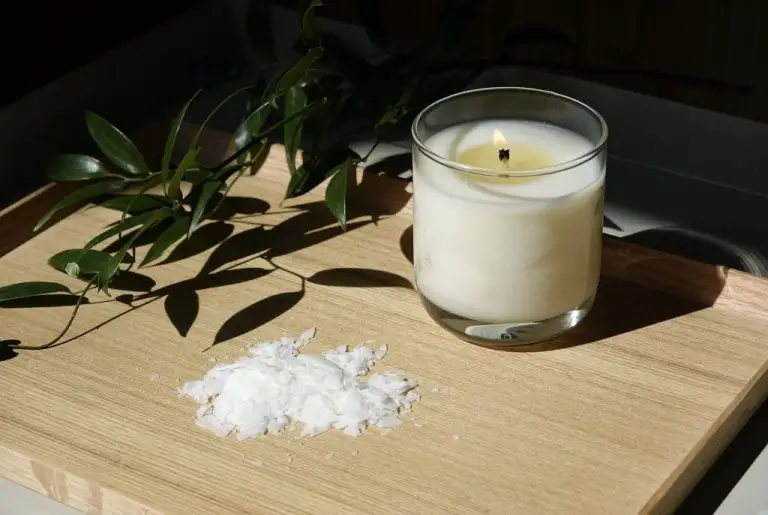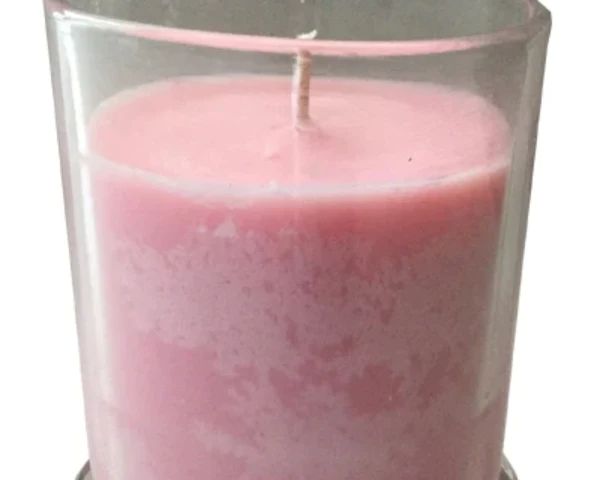Are All Soy Wax Candles Non-Toxic?
What is Soy Wax?
Soy wax is a type of wax made from hydrogenated soybean oil. Unlike paraffin wax, which is a petroleum byproduct, soy wax is made from a renewable resource – soybeans. To produce soy wax, soybean oil is hydrogenated, which converts the unsaturated oil into a solid wax through a chemical reaction with hydrogen. The hydrogenation process allows for some control over the hardness of the wax, making it suitable for container candles as well as pillars and votives.
Compared to paraffin wax, soy wax has many benefits:
– It’s made from a renewable, sustainable crop that’s environmentally friendly to produce (source).
– It burns cleaner, as the natural soy wax doesn’t produce the soot that paraffin wax does (source).
– Soy candles have excellent scent throw compared to paraffin.
– Soy wax is biodegradable and non-toxic.
Are Soy Candles Non-Toxic?
Soy wax itself is non-toxic and made from soybeans, which is why soy candles are often marketed as a natural, non-toxic alternative to paraffin wax candles. However, other ingredients in soy candles may contain toxins.
The soy wax used in candles is refined and bleached, removing any protein or potential allergens. This renders the soy wax non-toxic on its own (Lochtree, 2023). However, many soy candle manufacturers add synthetic fragrances and artificial dyes which can release volatile organic compounds (VOCs) when burned. These VOCs can be irritating to lungs. The wicks may also contain heavy metals like lead and zinc.

So while soy wax itself is non-toxic, the other added ingredients may contain toxins. It’s important to read candle labels and look for 100% soy wax candles with essential oil or natural fragrances and vegetable dye. Or make your own candles so you control what goes in them.
Fragrance Oils
Fragrance oils are commonly used to give soy candles their scents. Unfortunately, many fragrances contain phthalates which can be toxic. Phthalates are added to help fragrance oils blend better and make the scent last longer in products like candles. One common phthalate used is diethyl phthalate (DEP). According to sources (The Flaming Candle, Brambleberry), DEP can be hazardous to health when breathed in or absorbed through the skin. It’s been linked to issues with the reproductive system and development. However, many candle companies now offer phthalate-free fragrance oils that are safe for soy candles.
Wicks
One of the main concerns with toxicity in soy candles is the wick. Many conventional candles use lead-core wicks which can release dangerous lead fumes when burned. According to Green America, a candle with a lead-core wick releases five times the amount of lead considered hazardous for children and exceeds EPA pollution standards for outdoor air (source).
Lead exposure can cause numerous health problems, especially in children, including behavioral issues, learning disabilities, impaired hearing, and lowered IQ. Even low levels of lead exposure can be harmful over time.
The safest candle wick options do not have a metal core. The most clean-burning and non-toxic candle wicks are 100% cotton or hemp, including wax-coated cotton or hemp (source). These natural fiber wicks do not release any toxic chemicals when burned and produce minimal soot.
When buying soy candles, check that they have a cotton, paper, or wood wick. Avoid any candles, even soy, that use a lead or zinc core wick.
Dyes
Some candle makers use synthetic dyes to color their soy candles. Unfortunately, some of these dyes may contain heavy metals like lead, arsenic, and mercury which can be toxic if inhaled or ingested (Black Liquid Candle Dye – CandleScience). Metals like lead and mercury are known neurotoxins that can accumulate in the body over time and cause health issues.
To avoid potentially toxic dyes, look for soy candles made with natural, non-toxic dyes like botanical extracts, fruits and vegetable powders, alkanet root, annatto seed, turmeric, activated charcoal, etc. Reputable candle makers will clearly list any dyes used and ensure they are free of heavy metals and other concerning ingredients (ECO Liquid Dyes – Hive & Honey Candle Co.). When in doubt, contact the company to inquire about their dye ingredients and testing procedures.
Making your own candles is another way to control the dyes used. Opt for plant-based colors from reputable suppliers that specifically state their dyes are non-toxic and free of heavy metals.
Testing for Toxins
There are a few ways you can test soy candles to ensure they are free of harmful toxins like lead, phthalates, and volatile organic compounds (VOCs):
Lead Testing – Special lead testing kits can detect the presence of lead in candle wax. Lead-free candles should have undetectable levels. One study showed paraffin, soy, palm, and stearin candles had non-detectable lead levels.
Phthalate Testing – Phthalate test kits can determine if these harmful plasticizers are present in fragrance oils. Look for candle brands that state their fragrances are phthalate-free.
VOC Testing – VOC meters can measure the amount of volatile organic compounds released when a candle is burned. Low VOC soy candles emit less of these air pollutants.
The best indication a soy candle is non-toxic is when the company has rigorous testing protocols and provides documentation of purity. Always check ingredient lists and purchase unscented or naturally scented soy candles when possible.
Tips for Non-Toxic Soy Candles
When looking to make or purchase non-toxic soy candles, there are a few key things to look for:
Opt for 100% soy wax as the main ingredient. Soy wax is made from soybeans and is a clean-burning, natural alternative to paraffin wax. According to Slow North, soy wax contains no petroleum by-products and has a lower melting point, which reduces soot.
Use essential oil fragrances rather than synthetic fragrances. Essential oils are derived from plants and are less likely to contain harmful chemicals. Double check that any essential oils are high quality and 100% pure.
Choose cotton wicks over conventional wicks that may contain lead or zinc. Cotton wicks are natural and burn cleaner.
When adding dyes, opt for plant-based dyes like those made from fruits, vegetables, and herbs. Avoid artificial dyes which can release VOCs when burned.
Making candles with 100% soy wax, essential oils, cotton wicks, and plant dyes results in a non-toxic candle free of harsh chemicals.
Benefits of Non-Toxic Candles
Non-toxic soy candles made from natural ingredients like soy wax and essential oils provide some key benefits compared to conventional candles made with paraffin wax.
First, non-toxic candles burn cleaner and emit less soot and smoke. Paraffin candles release compounds like toluene and benzene into the air as they burn, which can aggravate asthma and allergies. Soy wax candles do not release these harmful chemicals, resulting in cleaner indoor air (source).
Second, non-toxic soy candles are safer for your health. The soot released from paraffin wax candles contains carcinogens and can be inhaled. Soy wax produces barely any soot so there are no concerns about inhaling dangerous compounds. Plus, essential oil fragrances do not contain synthetic chemicals linked to hormone disruption (source).
Overall, choosing non-toxic soy or beeswax candles over paraffin candles provides benefits like cleaner air, reduced exposure to dangerous chemicals, and better indoor air quality.
Top Non-Toxic Soy Candle Brands
When looking for non-toxic soy candles, it’s important to choose brands that use high-quality, natural ingredients. Here are some of the top options:
Prosperity Candle – This brand uses 100% soy wax, cotton wicks and essential oil blends. Their candles are hand-poured in Brooklyn, New York and are cruelty-free, vegan and made without any synthetic ingredients.
GROW Fragrance – GROW makes soy candles with lead-free cotton wicks and phthalate-free fragrances derived from plants and minerals. Their candles are hand-poured in small batches in California.
Ritual & Fancy – This woman-owned brand offers soy candles made with 100% natural soy wax and lead-free cotton wicks. Their fragrances use essential oils and are phthalate-free.
P.F. Candle Co. – P.F. Candle Co. makes their candles with 100% soy wax sourced from American farmers. They use cotton core wicks and essential oil blends.
Siblings – Siblings candles are hand-poured in Brooklyn using natural soy wax, lead-free cotton wicks and phthalate-free fragrances. They offer a range of classic and seasonal scents.
Making Your Own Non-Toxic Candles
If you want to ensure your candles are non-toxic, making your own at home is a great option. Here are some tips for DIY non-toxic soy candles:
Use 100% natural soy wax. Pure soy wax is non-toxic and emits very little soot when burned (1).
Avoid paraffin wax, which can produce toxins when burned (2).
Use essential oils or natural fragrance oils specifically made for candle making. Avoid synthetic fragrances, which can release VOCs (volatile organic compounds) when burned (3). The safest option is to skip fragrance altogether.
Make sure candle wicks are lead-free. Look for cotton or wood wicks (4). Trim wicks to 1⁄4 inch before lighting to prevent excess soot.
Avoid artificial dyes, which can release potential toxins. Use natural plant-based dyes like turmeric, paprika, or bee pollen instead (5).
Always burn soy candles in a well-ventilated area. Never leave burning candles unattended.
Making your own candles allows you to control exactly what goes into them. With pure ingredients like soy wax and essential oils, you can create non-toxic candles safely in your own home.





